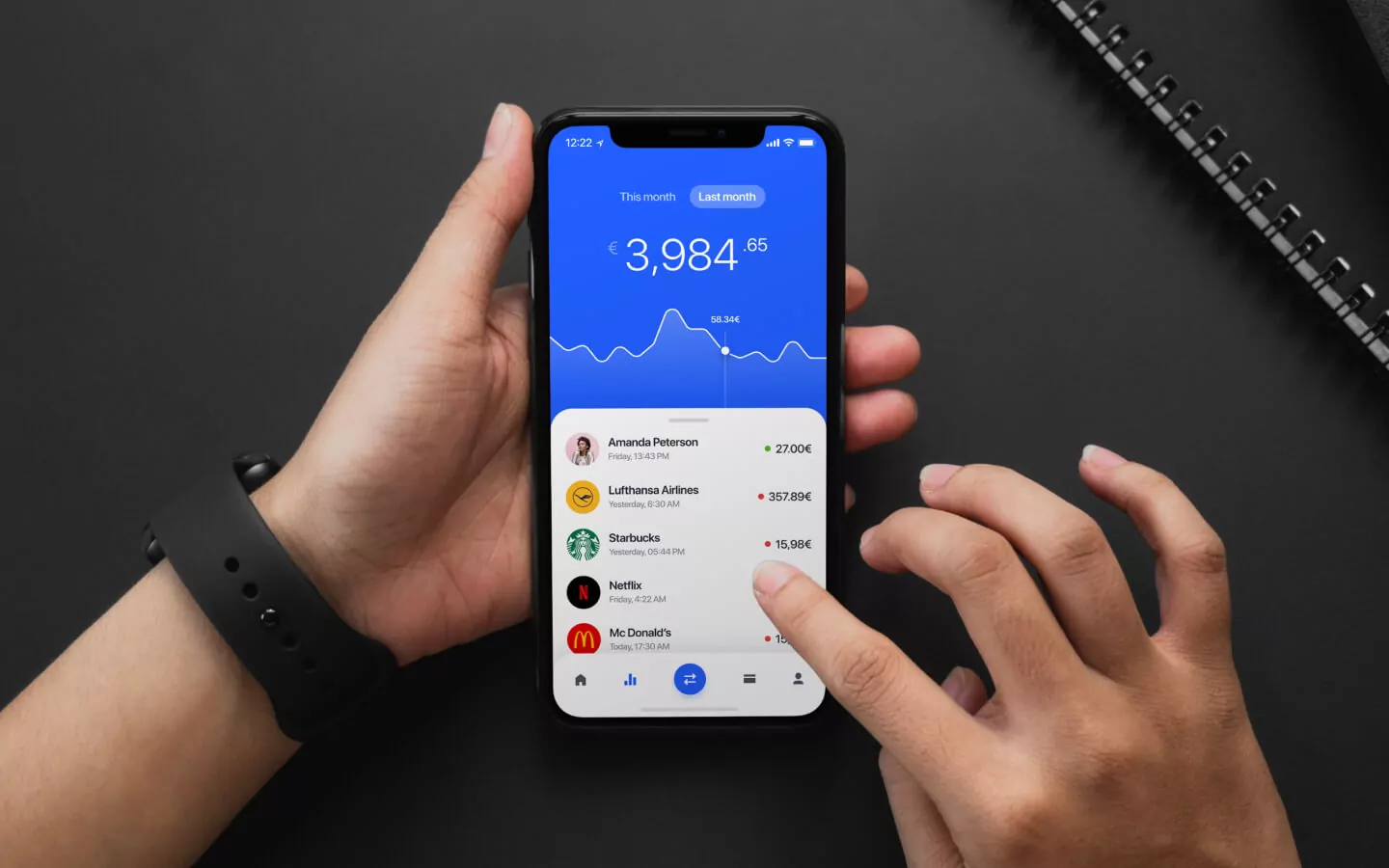UX writing isn’t a skill you can learn overnight. Our blog will help you on your way to becoming a 5star UX writer.
6 UX writing skills you should learn for mobile apps
UX writing skills aren’t easy to master. One might think all it takes to become a UX writer is knowing how to write pretty well.
They couldn’t be more wrong.
UX writing isn’t only putting words in apps. It takes preparation, strategy, knowledge, and most importantly rigorously studying the craft. If you want to do it well, that is.
Here, we’ll explore 6 crucial skills every UX writer should have to succeed in their job. If you feel you’re lacking in any of these areas, don’t worry! We’ll give you tips on how to improve.
Let’s take a look!
Table of Contents
Writing skills
Writing skills being important in UX writing might be obvious. However, many people might think they have writing skills because their 8th-grade English teacher thought their essay was good.
Also, having writing skills in one discipline doesn’t necessarily translate entirely to another. Sure, it will help your UX writing if you have previous experience as a journalist but it’s a different field entirely.
Look at it this way:
Swimming good breaststroke might help you in getting better at front crawl, but that’s about it. You still have to learn the specifics of the stroke in order to master it.
So, which writing skills should you learn to become a good UX writer? Let’s take a look.
Be concise
Among the most important UX writing principles is concision. It’s the art of saying as much as possible in as few words as possible. This is especially important when you’re writing for mobile apps since the space is much more limited.
Let’s say you’re writing for an error screen.
Don’t write: “An error occurred when you entered your password. You should make sure you write the correct password.”
Instead, write: “Wrong password. Please enter the correct password.”
Here’s a similar example:
Source: UX Planet
This example might make it obvious which words should be removed, but with practice, you should be able to identify redundant words in trickier situations.
Write in an active voice
This advice goes for almost all types of writing. You want the user to be engaged and involved.
Using active voice can help there.
Here’s what I mean:
Don’t say: “your account was updated”
Say: “We updated your account”
Don’t say: “The problem is being looked at.
Say: “We’re investigating the problem
The subject of the sentence is getting something done to them. “The problem” is being looked at.” That’s passive voice.
In the better sentence “we” are a subject who’s performing an action. We’re investigating the problem.
Keep that in mind when writing for UX.
Track language consistency
When you’re writing for an app there are 2 things you should combine in order to create the write tone and voice:
Combining who your brand is with the user you’ve identified will create a unique voice for your product. The way you write should be consistent across all screens in the app.
Throughout the design process , you should regularly review your UX copy and check it for language and tone consistency. Here’s a little image that can help you in that.
Using this little table can assist you in easily detecting tone inconsistencies throughout the entire app.
You should always aim for a single unique voice to guide your user.
Be useful
UX writing is all about usefulness to the user. How you can help and guide them.
Here’s what I mean:
When your room booking app notifies the user that there are no available rooms on a certain date, it shouldn’t say this:
“There aren’t any rooms available.”
Instead, it should say something like this:
“There aren’t any rooms available at this date. Take a look at available dates.”
This way you’re not just notifying the user of what just occurred but you’re also helping them find a solution to their problems. And that’s what UX writing is. Problem-solving for the user.
In order to understand the user and which problems you need to solve it’s important to do your research. And that’s what this next skill is all about.
Research skills
A UX writer always works within a team. In larger companies with more developed design teams, you might get to work with a UX researcher. While UX writers at Google might have the luxury of working with one you shouldn’t bet on that.
The UX researcher will have their work emphasize research, but UX writers would still need to participate in order to get involved more closely with the project and to gain a better understanding of the user.
If you start working at a smaller company, chances are you won’t have a UX researcher. The design team will be smaller, therefore every member will have bigger responsibilities. The whole team will have to collaborate during user research.
Source: Justinmind
It is crucial for the UX writer to learn why research is done and how to do it.
After all, UX writing is only as good as the research behind it. You can’t properly understand the user or the brand you’re representing without delving deep into research.
Here’s the most important tip for learning how to research UX:
Study different research methods.
As you collaborate with your team on research you’ll have to do some of these methods:
Getting familiar with these techniques will grant you deeper understanding of what it actually means to research UX.
After having done the research, it’s time to learn how to strategically think about UX writing.
Strategic skills
As A UX writer, your job isn’t only to make information in sentences within the app easily digestible. It’s also to strategize and decide how, when, and where you’re going to present this information. This is where information architecture comes into play.
Information architecture is a skill that deals with laying out information through the app in the best way possible. It’s much bigger picture type of thinking than worrying how to make an error message sound friendly.
This is what separates a good UX writer and a great UX writer
A good UX writer will no doubt know how to make words on the screen simple and easy to understand.
A great UX writer will have all the skills of the good one BUT they’ll also know how to make the written content within the entire app into a cohesive structure. A great UX writer studies information architecture and applies it to their work.
You will most certainly not be solely responsible for creating content structure within an app. You’ll work with designers, project managers and developers from the early stages of the design process such as wireframing, to create a logical content structure.
While you won’t be alone, it’s still important to understand how it’s done. Here are a few tips to get better at information architecture.
Ask the right questions before you start
Information architecture deals with its own set of problems. Here are a few questions you should answer to make your job easier:
- What does our content inventory consist of?
- How do we connect all screens in a logical way?
- How do we make content easier to find?
- Which information should be on which screen?
- What kind of terminology are users comfortable with?
- What sort of overarching tone are we looking to present?
You’ll think of more questions through your working experience, but these should help you out nicely when you find yourself writing for UX.
Study different information patterns
You could present information in an app in many different ways. Let’s have a quick look at all the usual patterns.
Hub and spoke is mostly used by iPhone apps. The idea behind it is that there’s a base screen in the app which leads to all other screens. The user has to return to the first screen to access all the others.
Source: Applikey
Hierarchy is the most logically sound information pattern at least to me. One chief index screen leads to branches of other subscreens which can also lead to even more screens.
While it’s mostly applicable for websites, it’s good for apps that have a similar structure.
Nested doll is for Android what hub and spoke is for iOS. It has a linear structure that doesn’t lead the user to any confusion. They can easily move from the main screen to other screens with more information.
Tabbed view is good for apps that want the users to utilize the search function and compare different prices, articles etc. (think of a shopping app). It allows the user to open many tabs from the main screen and that way they can access information.
You should always remember that you won’t be writing words on a sheet of paper or in a word document. You’ll write them on interfaces, tooltips and other UI elements. That’s why it’s important to learn the next skill on the list.
Basic design skills
Having skills with design tools will give you the necessary context for your UX writing.
Think about it: You’re working closely with UX/UI designers. Working in a collaborative tool with them, such as Figma is priceless.
The vision you and designers have about the product becomes more singular as you work together on the project. It’s much better than being handed a finished interface and told you should put words in it.
Molding design to fit the writing and vice versa results in a much better end product, leaving all stakeholders more satisfied.
Working with a UX writer or with designers might be challenging, but don’t be discouraged.
Now let’s have a look at Figma, the tool I mentioned earlier, and see how you can get better at using it.
Figma’s one of the more intuitive design tools so you shouldn’t have too many problems with it.
Here are a few tips on how to get better at using it:
- Check out the Figma tutorial on their website
- Study their design learning course
- Take a look at Design lab’s tutorial too
- Watch useful video tutorials
- Most important tip- Download Figma and start fooling around there. It’s the best way to learn about this tool
In order to learn more generally about design, you should read good books on the subject. Here are some I found interesting:
- 100 Things Every Designer Needs to Know About People by Susan Weinschenk
- The Design of Everyday Things: Revised and Expanded Edition by Don Norman
- Lean UX: Designing Great Products with Agile Teams by Jeff Gothelf and Josh Seiden
I mention Figma because it’s the tool I’m most familiar with. You can always check out alternatives such as: Adobe XD, Balsamiq, UXPin, and Justinmind.
Having a grasp on UX writing, research, strategy, and design tools puts you close to understanding which skills a UX writer should have.
That won’t matter much without this next crucial skill.
Communication skills
You might be thinking something along these lines:
“Why would I need to have communication skills, I just need to sit at my desk and write.”
Well, believe it or not, a UX writer is first and foremost, a communicator.
To put it plainly, you’re not writing words in a vacuum. You’re communicating with the user in order to make their journey through the app easier and more enjoyable. That’s one of the reasons you should learn how to communicate properly.
The second reason would be teamwork and collaboration. On a daily basis, you’ll be working with UX and UI designers, project managers, developers, and other stakeholders.
Without good communication skills some of these things might happen to you:
- What you thought was constructive criticism can be taken as an insult
- Your suggestions get ignored
- Your contribution to the project is downplayed
- You or your teammates make mistakes due to miscommunication
- You cannot align your vision with the designers
Being a UX writer you will most certainly work in a team. That means you’ll need to communicate daily.
In the context of UX writing, there are a few areas of communication you can improve on:
Learn how to listen actively
You cannot effectively communicate without knowing how to listen.
Let’s say you’re in a meeting and one of the designers is having a long monologue about the UX design still being confusing for the user.
Source: Tech Tello
You phasing out and not listening to this key information can lead to you ignoring it completely.
Here’s what you should do:
- Stay focused- drink a cup of coffee or green tea before the meeting
- Don’t plan what to say while the other person is talking
- Ask questions if something’s unclear
- Don’t jump to conclusions
- Don’t interrupt-write down your thoughts and express them later
A good listener is on a sure path to becoming a great communicator.
Give and ask for feedback
Giving feedback might be tricky when different personalities are involved. It might hurt some egos and in the long run damage your professional relationships with your teammates. Doing it correctly is all the more important.
Imagine a scenario: During a meeting one of the UX designers comes up with an idea on how to improve the usability of the design. You immediately understand the idea is a bad one, a lot of potential problems can arise from it and it doesn’t even make the UX any better.
Now here are a few tips on how you could approach giving feedback to your teammate:
- Start with something positive
- Do not use negative words such as: bad, awful, moronic etc
- Always try to give some advice on how to improve the idea
- If there’s no way to improve it, try to give an alternative solution
Don’t mistake these suggestions with sugarcoating or lying. The approach should be gentle, but you should never avoid the problems you can see. Communicate them clearly.
There’s another side to that coin. Asking for feedback.
It’s rarely pleasant to hear negative feedback from your teammates or team lead. However, it’s crucial to becoming a better UX writer.
Whenever you can, you should ask for feedback on your work and try to take it on the chin. Separate yourself from your work. That will allow you to perform better.
Having gotten a grasp of all the important skills of UX writing it’s time to talk about this next skill which is above all others.
Empathy skills
If you’ve been studying the world of UX design, you must’ve come across the phrase “User-centered design”. Although it might seem self-explanatory, I’ll explain it anyway.
It’s the mindset behind the design which has a singular focus on the user’s needs, desires, pain points, and difficulties.
Every single word you write on the user interface must have the user in mind. You must put yourself in their shoes and imagine you’re the one who’s gonna use this app. You should be both the UX writer and the user.
Putting yourself in the shoes of others is otherwise known as empathy. Anyone working in the field of UX design should try to develop that skill.
Why?
Because in the ever-growing ruthlessly competitive market of mobile apps those that stand out are those that are useful to the user.
Utilizing empathy, you’ll be able to understand the user much better than you previously would have.
You might start despairing now because many people think that empathy is something that can’t be learned.
While it’s true that the emotional response people feel for others cannot be taught, you can still learn to imagine being in other’s shoes. You can understand what others are going through, what pain points they have etc.
Let’s have a look at how you can become better at empathy.
I’ve identified these 3 questions as key when thinking about the user.
- Are they going to understand what’s written?
- How long will it take them to understand?
- Is there a way to simplify it?
You should ask yourself these questions constantly in order to improve your writing. Especially when you’re editing and reviewing your copy.
Another good way of getting better at empathy in UX writing would be to utilize empathy maps.
Source: Nielsen Norman group
It’s a map that deals with all of the dimensions of user interaction with the app.
The says quadrant is all about what the user tells you about the app during an interview.
Do they like it or not, what aspect of it did they like/dislike etc.
The thinks quadrant is a bit trickier. Having gathered data from your research you should be able to extrapolate certain thoughts a user might have about your UX design.
We move to the does quadrant. How does the user interact with the app? Are they moving through screens quickly or are they using each screen for a longer period of time? Are they quitting it quickly?
The final is the feels quadrant. You have to think to yourself:
- Could the user have potential worries with the app?
- Are they happy with the app?
- Are they having any problems with it?
Using the empathy map will lead you to a better understanding of the user without a doubt.
Understanding the user is the true meaning of empathy. As a UX writer, you are now well on your way to doing that.
Conclusion
We went through all of the most important skills needed to become a better UX writer.
Although I did give you tips on how to do it, there’s one tip I left for the end.
Practice.
You can watch all the tutorials, read all the books, and understand all the concepts. You won’t get better without actually trying to write for UX.
You don’t need to have a UX writing job for that. Here’s what to do:
- Pick any app you’re using
- Analyze the flaws in its UX copy
- Try to make it better
That’s all you need to do really to become more skilled.
If you want to learn more about UX writing skills, app design, or app development in general, you should check out our blog.




